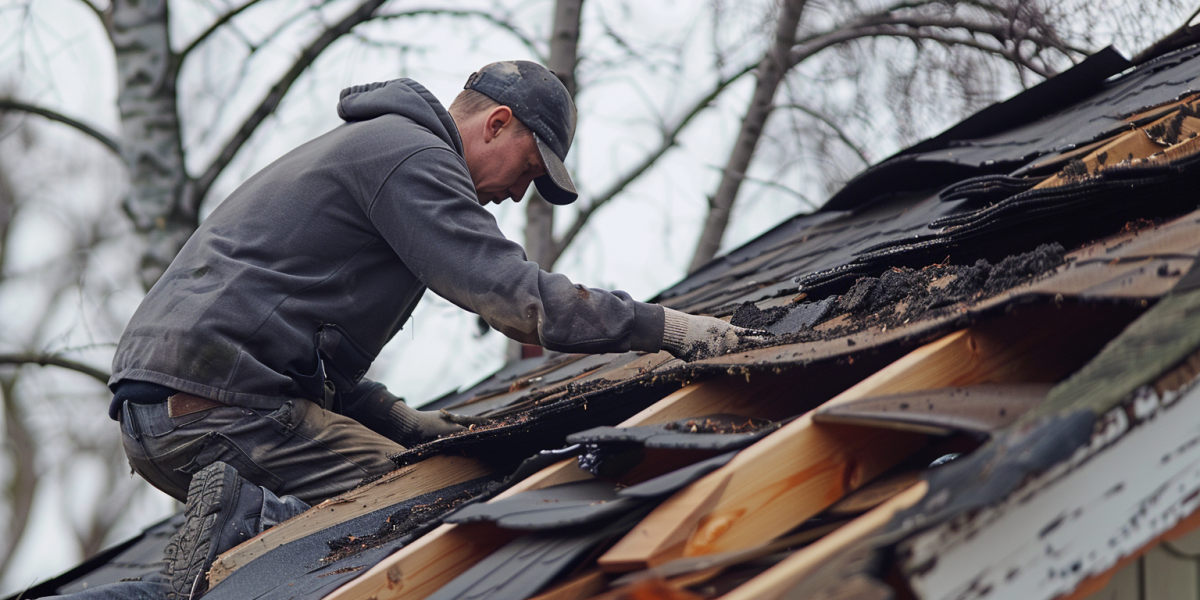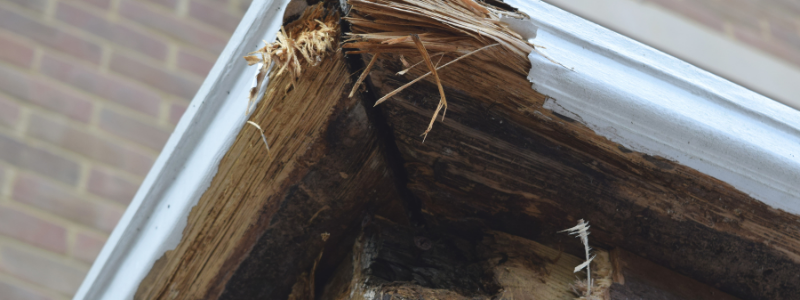B&M Roofing Services in Denver: A Homeowner’s Review
Hi, my name is John, and as a true local, I want to share some things with my fellow Coloradans. When my roof started showing signs of wear and tear, I knew I had to act fast. Living in Denver, I’ve experienced how tough the local weather can be on a home’s exterior, especially the roof. I wasn’t surprised to learn that many Denver homeowners face roof damage due to these weather conditions; later, I found out that hailstorms alone can cause over $4.8 billion in damages annually across the U.S.! So, naturally, I wanted to make sure I chose the right company for the job. That’s when I found B&M Roofing Services, a local Denver company that truly understands our unique climate and needs. Hiring them was one of the best decisions I made for my home, and here’s why.
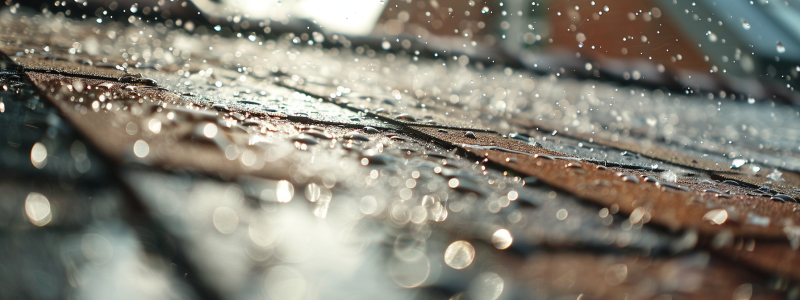
Why I Chose B&M Roofing Services
Finding the right roofing company was crucial when my roof started showing signs of wear and tear. I needed a team that understood Denver’s unique climate and could deliver reliable, high-quality service. That’s when I found B&M Roofing Services. Here’s why hiring them made all the difference for me.
Expertise in Denver’s Climate
- Understanding Local Weather: Denver’s weather is incredibly variable. We get intense sunlight, heavy snow, and frequent hailstorms, all of which can wreak havoc on roofing materials. They recommended solutions tailored to withstand our local climate, ensuring my roof’s longevity.
- Knowledge of Local Building Codes: Building codes and regulations can vary significantly from one area to another. This knowledge helped ensure my roofing project complied with all local laws, preventing potential legal issues and additional costs down the line.
Trust Within the Community
- Strong Local Reputation: B&M Roofing Services has built its reputation on the trust and satisfaction of our community. They rely heavily on word-of-mouth referrals and repeat business from local customers. I could easily verify their reputation through neighbors, friends, and online reviews.
- Visible Local Projects and Testimonials: Local roofers typically have a portfolio of completed projects within the area. I could visit these sites or inquire about them to gauge the quality of their work.
The Key Benefits I Experienced with B&M Roofing Services
Choosing B&M Roofing Services offered me numerous advantages beyond just getting my roof fixed. Here are the key benefits I experienced:
Quick Response Times
- Faster Service and Emergency Repairs: Being local, B&M Roofing Services could provide faster response times. This was crucial when a hailstorm caused damage to my roof. Their prompt response and quick repairs prevented further damage to my home.
Personalized Customer Service
- Tailored Services Based on My Needs: B&M Roofing Services took the time to understand my specific needs and tailored their services accordingly. They provided customized solutions that met my unique requirements, ensuring the project was handled with utmost care and attention to detail.
- Direct Communication with the Team: I had direct access to the team at B&M Roofing Services. This led to better understanding and clearer expectations throughout the project. Any questions or concerns I had were addressed immediately, making the entire process smooth and stress-free.
Supporting the Local Economy
- Investing in the Community: By hiring B&M Roofing Services, I was supporting the local economy. The money I spent on roofing services stayed within our community, contributing to the growth and development of local businesses.
- Creating Local Jobs and Supporting Local Suppliers: B&M Roofing Services creates jobs within our community and often sources materials from local suppliers. This not only boosts the local economy but also ensures high-quality materials suitable for Denver’s climate.
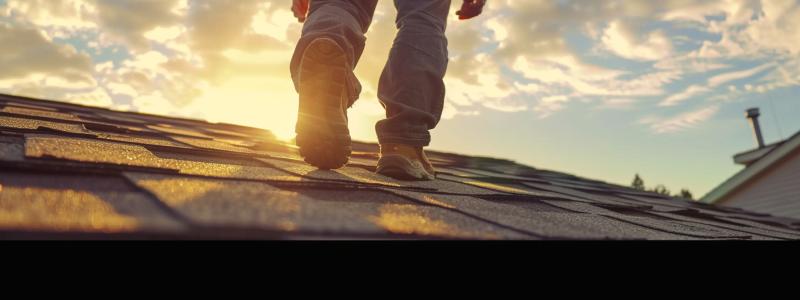
The Benefits I Experienced with B&M Roofing Services
Choosing B&M Roofing Services offered me numerous advantages beyond just getting my roof fixed. Here are the key benefits I experienced:
Quick Response Times
- Faster Service and Emergency Repairs: Being a true local and not some fancy conglomerate, B&M could provide faster response times. This was crucial when a hailstorm caused damage to my roof. Their prompt response and quick repairs prevented further damage to my home.
Personalized Customer Service
- Tailored Services Based on My Needs: B&M Roofing Services took the time to understand my specific needs and tailored their services accordingly. They provided customized solutions that met my unique requirements, ensuring the project was handled with utmost care and attention to detail.
- Direct Communication with the Team: I had direct access to the team, no intermediaries. This led to a better understanding and clearer expectations throughout the project. Any questions or concerns I had were addressed immediately, making the entire process smooth and stress-free.
Supporting my Local Neighbors
- Investing in the Community: By hiring them, I was supporting the local economy. The money I spent on roofing services stayed within our community, contributing to the growth of local businesses.
- Creating Local Jobs and Supporting Local Suppliers: B&M Roofing Services creates jobs within our community and often sources materials from local suppliers. This not only boosts the local economy but also ensures high-quality materials suitable for Denver’s climate.
Best Practices I Followed When a Roofing Contractor
Choosing the right roofing contractor was a new activity for me. Here are some best practices I followed when hiring them:
Check Credentials and Experience
- Proper Licensing and Insurance: I made sure that B&M Roofing Services was properly licensed and insured. This protected me from liability in case of accidents or damages during the project. Verifying their credentials gave me peace of mind, knowing they complied with all local Denver building codes, which I know nothing about!
- Proven Track Record: I looked for a roofing contractor with a proven track record and extensive experience in the industry. B&M Roofing Services had a long history of successful projects in the Denver area.
Read Reviews and Ask for References
- Online Reviews and Client Testimonials: I utilized online reviews to gain insights into the quality of B&M Roofing Services’ work and customer service. Positive feedback from past clients was a good indicator of their reliability and professionalism.
Get Multiple Quotes
- Comparing Prices and Services: I obtained estimates from other roofing contractors to compare prices and services offered. B&M Roofing Services provided a transparent and competitive quote.
- Avoiding Low Bids: I was cautious of unusually low bids, as they might indicate subpar materials or workmanship.
Understand Contract Details
- Clear Contract Terms: Before signing a contract, I ensured that I understood all the terms and conditions. The contract outlined the scope of work, payment schedule, timeline, and other important details.

Your Future Is the Best Investment
Without a doubt, choosing B&M Roofing Services for my roofing needs in Denver was an absolute game-changer for my home. Their profound grasp of our town’s specific climate, strict compliance with local building codes, and unwavering dedication to excellence and customer happiness truly distinguish them from other roofing companies.
If you’re seeking roofing services in Denver, your search ends here. Their unwavering commitment to top-notch quality, customer contentment, and active community engagement makes them the ideal partner for our roofing endeavors. Trust me, you won’t find a better fit for your roofing projects in Denver!
Roofing Contractor in Denver
Maintaining a sturdy and reliable roof is crucial for protecting your home or business from the elements, especially in a place like Denver, Colorado, where the weather can be unpredictable and harsh. That’s why it’s essential to ensure it’s always in top condition. When it comes to roofing repairs and maintenance, finding a trustworthy and experienced roofing contractor in Denver can make all the difference. B&M Roofing Services has been a cornerstone in the Denver roofing industry, offering top-notch services to both residential and commercial clients. With a reputation for quality work and exceptional customer service, they are the go-to choice for anyone looking to keep their roof in the best possible shape.
In this brief article, we’ll explore the best practices for booking a roofing contractor in Denver, highlighting the expertise provided by us at B&M Roofing. Whether you’re dealing with a minor repair or planning a complete roof replacement, understanding the process and knowing what to look for in a contractor will help you make informed decisions and ensure your roof remains strong and durable for years to come.

Why Regular Roof Maintenance is Essential
Denver poses unique challenges. The city experiences a wide range of weather conditions, from heavy snowfall and ice in the winter to intense sunlight and thunderstorms in the summer. These varying conditions can cause significant wear and tear on your roof, making regular inspections and maintenance crucial.
Importance of Regular Inspections
Regular roof inspections help identify and address minor issues before they become major problems. Small leaks, loose shingles, or minor damage can quickly escalate if left unattended, leading to costly repairs or even a full roof replacement. By scheduling regular inspections, you can catch these issues early and extend the life of your roof.
Common Roofing Issues in Denver
Denver’s climate can lead to common roofing problems, including:
- Snow and Ice Damage: Heavy snowfall can add weight to your roof, potentially causing structural damage. Ice dams can form, leading to water seepage and leaks.
- UV Damage: Intense sunlight can cause roofing materials to deteriorate, leading to cracking and fading.
- Wind Damage: Strong winds can lift and remove shingles, exposing the underlying materials to the elements.
- Hail Damage: Hailstorms are common in Denver and can cause significant damage to roofing materials, leading to leaks and structural issues.
Long-Term Benefits of Timely Repairs
Timely roof repairs not only prevent minor issues from becoming major problems but also offer several long-term benefits:
- Cost Savings: Addressing minor issues promptly can save you money by avoiding costly repairs or a full roof replacement down the line.
- Energy Efficiency: A well-maintained roof provides better insulation, reducing energy costs for heating and cooling your home.
- Increased Property Value: A sturdy, well-maintained roof enhances the overall value of your property, making it more attractive to potential buyers.
Key Factors for Choosing a Roofing Contractor
Selecting the right roofing contractor is crucial to ensuring the success and quality of your roofing project. Here are some key factors to consider when choosing a roofing contractor in Denver:
Licenses and Certifications
Ensure the roofing contractor you choose is properly licensed and certified to operate in Colorado. This guarantees that they meet the necessary state regulations and standards. Certified contractors are more likely to adhere to industry best practices and provide high-quality work.
Experience with Denver-Specific Roofing Challenges
Denver’s unique climate requires specialized knowledge and experience. Choose a contractor with a proven track record of handling Denver’s weather-related roofing issues, such as heavy snowfall, hail, and intense UV exposure. Experienced contractors will know the best materials and techniques to use for long-lasting results.
Customer Reviews and Testimonials
Research the contractor’s reputation by reading customer reviews and testimonials. Look for feedback on their professionalism, quality of work, timeliness, and customer service. Positive reviews and high ratings are indicators of a reliable contractor. Additionally, ask the contractor for references from previous clients and follow up with them to get firsthand accounts of their experiences.
Warranty and Insurance Considerations
A reputable roofing contractor should offer warranties on both their workmanship and the materials they use. This ensures that you’re protected against any defects or issues that may arise after the project is completed. Additionally, verify that the contractor has adequate insurance coverage, including workers’ compensation and liability insurance. This protects you from any potential liability in case of accidents or damages during the project.
Detailed Estimates and Transparent Pricing
Request detailed written estimates from potential contractors. A comprehensive estimate should include the scope of work, materials to be used, labor costs, and a projected timeline. Transparent pricing and clear communication help avoid misunderstandings and ensure that you know exactly what to expect.
Local Knowledge and Community Involvement
A local contractor with a strong presence in the Denver community is more likely to be invested in maintaining a good reputation. Local contractors are familiar with local building codes and regulations, ensuring compliance with all requirements. They are also more accessible for follow-up services and warranty claims.
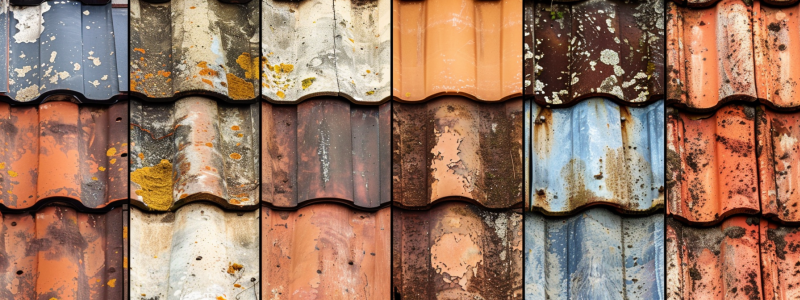
Primary Services Offered by B&M Roofing
B&M Roofing Services provides a comprehensive range of roofing solutions tailored to meet the needs of both residential and commercial clients in Denver. Here are the primary services they offer:
Residential Roofing Services
B&M Roofing is dedicated to helping homeowners protect their most valuable investment. Their residential roofing services include:
- Roof Installation: Whether you’re building a new home or replacing an old roof, B&M Roofing offers expert installation services using high-quality materials. They work with various roofing types, including asphalt shingles, metal roofing, tile, and more.
- Roof Repairs: From minor leaks to significant storm damage, B&M Roofing can handle all types of repairs. Their team quickly identifies the issue and implements effective solutions to restore your roof’s integrity.
- Roof Inspections: Regular roof inspections are essential for maintaining your roof’s health. B&M Roofing provides thorough inspections to catch problems early and recommend necessary maintenance or repairs.
- Roof Maintenance: Preventative maintenance services help extend the lifespan of your roof. B&M Roofing offers customized maintenance plans to keep your roof in top condition year-round.
Commercial Roofing Solutions
B&M Roofing understands the unique challenges of commercial roofing and offers specialized services to meet the needs of businesses and commercial properties, including:
- Commercial Roof Installation: They provide expert installation services for various commercial roofing systems, including flat roofs, TPO, EPDM, and more. Their team ensures that the roofing system is durable and energy-efficient.
- Commercial Roof Repairs: Prompt and effective repair services minimize downtime and protect your business operations. B&M Roofing is experienced in handling complex commercial roof repairs.
- Commercial Roof Maintenance: Regular maintenance is crucial for commercial roofs to prevent costly damage and ensure compliance with warranty requirements. B&M Roofing offers tailored maintenance plans for commercial properties.
- Roof Coatings: Roof coatings can extend the life of your commercial roof, improve energy efficiency, and reduce maintenance costs. B&M Roofing applies high-quality coatings that offer excellent protection and durability.
Emergency Repair Services
Roofing emergencies can happen at any time, and B&M Roofing is ready to respond quickly to mitigate damage and restore your roof. Their emergency services include:
- Storm Damage Repair: Severe weather can cause significant damage to your roof. B&M Roofing offers rapid response and expert repair services to address storm-related issues.
- Leak Repair: Quick and effective leak repair services prevent water damage to your home or business. B&M Roofing’s team identifies the source of the leak and provides a long-lasting fix.
Preventative Maintenance Programs
B&M Roofing’s preventative maintenance programs are designed to keep your roof in optimal condition, preventing major issues and extending its lifespan. Their maintenance services include:
- Regular Inspections: Scheduled inspections to identify potential problems early.
- Routine Maintenance: Services such as cleaning gutters, checking for loose or damaged shingles, and ensuring proper drainage.
- Detailed Reports: Comprehensive reports detailing the condition of your roof and any recommended actions.
Tips for Preparing for Your Roofing Service Appointment
Proper preparation for your roofing service appointment can ensure the process goes smoothly and efficiently. Here are some essential tips to help you get ready for your appointment with B&M Roofing Services:
What to Expect During the Inspection
Understanding what happens during a roof inspection can help you prepare adequately:
- Thorough Examination: The roofing specialist will conduct a detailed inspection of your roof, including the interior and exterior. They will look for signs of damage, wear and tear, and potential problem areas.
- Photographic Evidence: To provide a clear understanding of the roof’s condition, the inspector may take photos of any issues they find. This visual documentation helps explain the recommended repairs or replacements.
- Discussion of Findings: After the inspection, the specialist will discuss their findings with you, explaining any issues and suggesting the best course of action.
How to Prepare Your Home or Business
Preparing your property for a roofing service can help the process go more smoothly and protect your belongings:
- Clear the Area: Ensure that the area around your home or business is clear of any obstacles. Remove vehicles from the driveway and keep pets and children indoors to avoid any accidents.
- Protect Belongings: Inside your home, cover or move valuable items, especially in the attic, to protect them from dust or debris that might fall during the roofing work.
- Inform Neighbors: If your roofing project might affect your neighbors, such as noise or debris, it’s courteous to inform them ahead of time.
Understanding the Timeline and Scope of Work
Knowing what to expect in terms of timeline and work scope can help you plan better:
- Project Timeline: B&M Roofing will provide a detailed timeline outlining each phase of the project, from preparation to completion. Understand the start and end dates and any potential factors that might affect the timeline, such as weather conditions.
- Scope of Work: Be clear on what the project entails. This includes the type of materials being used, specific repairs or installations, and any additional work such as gutter replacement or insulation improvements.
- Communication: Establish a clear line of communication with the project manager or roofing specialist. This ensures that you stay informed about progress and can address any concerns promptly.
Preparing for Disruptions
Roofing projects can cause some disruptions. Here’s how to prepare:
- Noise: Roofing work can be noisy. Plan activities around the expected noise level, and inform any household members or employees about the potential disruptions.
- Debris: There may be debris around your property during the project. Ensure the work area is safe and avoid unnecessary access to the area to prevent accidents.
Post-Service Checklist
Once the roofing service is complete, follow this checklist to ensure everything is in order:
- Inspection: Conduct a walkthrough with the roofing specialist to inspect the completed work. Ensure all agreed-upon repairs or installations have been carried out to your satisfaction.
- Clean-Up: B&M Roofing will handle the clean-up process, ensuring your property is left in good condition. Confirm that all debris has been removed and the site is clean.
- Final Documentation: Obtain any final documentation, such as warranty information and maintenance tips, from the roofing specialist.
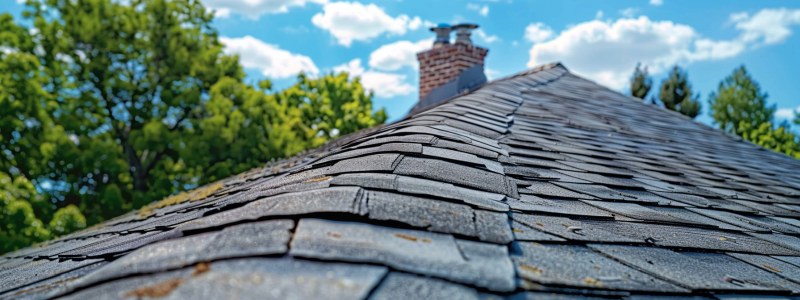
Final Advice
Choosing the right roofing contractor is essential to ensure the longevity and safety of your roof. Here are the key points to consider when booking a roofing contractor in Denver:
- Importance of Regular Maintenance: Regular roof inspections and timely repairs are crucial to prevent small issues from becoming major problems, saving you money in the long run.
- Factors for Choosing a Contractor: Look for licenses and certifications, experience with Denver-specific roofing challenges, positive customer reviews, and transparent pricing. Ensure the contractor offers warranties and has adequate insurance coverage.
- Booking Process with B&M Roofing Services: The process is straightforward, involving an initial consultation, detailed inspection, transparent estimate, scheduling, and clear communication throughout the project.
- Primary Services Offered: B&M Roofing provides comprehensive services, including residential and commercial roofing, emergency repairs, and preventative maintenance programs.
- Success Stories and Testimonials: Satisfied customers and successful projects highlight B&M Roofing’s commitment to quality and customer satisfaction.
- Preparation Tips: Properly prepare for your roofing service appointment by clearing the area, protecting belongings, understanding the timeline, and being ready for any disruptions.
B&M Roofing Services stands out as a reliable and experienced choice for all your roofing needs in Denver. Their extensive range of services, commitment to quality, and customer-centric approach ensure exceptional results. Whether you need minor repairs, a complete roof replacement, or routine maintenance, B&M Roofing has the expertise and resources to deliver.
Don’t wait until small issues become major problems. Contact B&M Roofing Services today to schedule a consultation and take the first step towards a safer, more durable roof. Protect your investment and enjoy the confidence that comes with knowing your roofing needs are in the hands of experts.
Importance of Regular Roof Maintenance
Roof maintenance is an essential aspect of property upkeep that often goes unnoticed until significant problems arise. At its core, roof maintenance involves regular inspections, cleaning, repairs, and preventative measures to ensure the longevity and functionality of a roofing system. This process is crucial for identifying potential issues early on, such as leaks, damaged shingles, or wear and tear, and addressing them before they escalate into more severe problems. Effective roof maintenance not only extends the lifespan of a roof but also helps in maintaining the aesthetic appeal of a property, ensuring energy efficiency, and safeguarding the building against weather-related damages.
BM Roofing and Its Expertise in the Field
BM Roofing stands as a beacon of excellence in the roofing industry, particularly in Denver, Colorado. With years of experience under our belt, BM Roofing has established itself as a trusted name among homeowners and business owners alike. Our team of skilled professionals is equipped with the knowledge, tools, and dedication needed to provide top-notch roof maintenance services. At BM Roofing, we understand that each roof has its unique needs and challenges. Therefore, we tailor our approach to meet the specific requirements of each client, ensuring their roof remains in optimal condition year-round. Our commitment to quality, combined with our expertise in the latest roofing techniques and materials, positions us as the go-to experts for all roofing maintenance needs.
Stay tuned for the next section, where we will delve into why regular roof maintenance matters and its pivotal role in preserving the integrity of your property.

Why Regular Roof Maintenance Matters
The importance of regular roof maintenance cannot be overstated when it comes to preserving the integrity of both residential and commercial properties. A well-maintained roof is vital in protecting a building from the elements, such as rain, snow, wind, and extreme temperatures. Regular maintenance ensures that the roof remains strong and functional, thereby safeguarding the interior of the property from water damage, mold growth, and insulation problems. Additionally, a roof in good condition contributes significantly to the overall energy efficiency of a building, helping to regulate indoor temperatures and reduce energy costs. In essence, regular roof maintenance is not just about fixing immediate issues; it’s about proactive care that extends the life of the roof and maintains the building’s structural integrity.
The Potential Risks and Costs of Neglecting Roof Maintenance
Neglecting roof maintenance can lead to a host of problems, often resulting in substantial costs and risks to property owners. Small issues like minor leaks or cracked shingles can quickly escalate into major concerns if not addressed promptly. For instance, water intrusion can lead to structural damage, rotting wood, and harmful mold growth, all of which are costly to repair. Moreover, a poorly maintained roof can significantly decrease a property’s value and curb appeal. In extreme cases, neglecting roof maintenance can even lead to roof failure, posing serious safety risks and necessitating expensive emergency repairs or replacements. Regular roof maintenance is, therefore, a critical investment that saves property owners from the high costs and risks associated with neglected roof issues.
In the following section, we will explore residential roof maintenance and how BM Roofing’s services can help protect your home.
Residential Roof Maintenance: Protecting Your Home
At BM Roofing, we specialize in a comprehensive range of residential roofing services designed to protect and preserve your home. Our team of experts conducts thorough inspections to assess the condition of your roof, identifying any potential issues such as missing or damaged shingles, leaks, or signs of wear and tear. Following the inspection, we provide tailored maintenance solutions, including repairs, cleaning, and preventive treatments, to ensure your roof remains in peak condition. We also offer guidance on selecting the best materials and roofing practices for your home, considering factors like local climate, roof design, and your personal preferences. Our commitment is to provide homeowners with peace of mind, knowing their roof is well-maintained and capable of withstanding the challenges posed by the environment.
Common Issues in Residential Roofs
Residential roofs are susceptible to a variety of issues, primarily due to weather exposure and aging. Common problems include leaks, which can lead to water damage inside the home; damaged or missing shingles, which compromise the roof’s integrity; and clogged gutters, which can cause water to pool and damage the roof structure. Regular maintenance from BM Roofing helps in early detection and repair of these issues, preventing them from escalating into more significant problems. For instance, replacing worn or broken shingles promptly can prevent leaks, while cleaning and inspecting gutters regularly can avoid water damage and structural issues.
Commercial Roof Maintenance: Safeguarding Your Business
Commercial roofing presents a unique set of challenges and requirements that differ significantly from residential roofing. Typically, commercial roofs are larger, have a flat or low slope, and are subject to different types of wear and tear, especially in industrial environments. These roofs often house critical equipment such as HVAC systems and need to withstand heavy foot traffic during maintenance and repairs. At BM Roofing, we understand these distinctive needs and are equipped to provide specialized commercial roofing services. Our team is trained to handle the complexities of commercial roofs, ensuring that they meet all safety standards and building codes while providing maximum protection and efficiency for your business.
Benefits of Regular Maintenance for Commercial Properties
Regular maintenance of commercial roofs is crucial for several reasons. Firstly, it ensures the longevity of the roof, which is a significant investment for any business. Regular inspections and timely repairs can prevent minor issues from becoming major disruptions that could affect daily operations. Secondly, a well-maintained roof is essential for the safety of the employees and customers, as it reduces the risk of collapses or leaks that could lead to accidents or damage to property. Finally, maintaining the roof in top condition can improve energy efficiency, reducing heating and cooling costs – a significant factor in operational expenses for most businesses.
Understanding Roof Inspections
Roof inspections are a critical component of overall roof maintenance. At BM Roofing, a typical roof inspection involves a comprehensive evaluation of the entire roofing system. Our experts meticulously examine the roof’s surface, looking for signs of wear and tear, such as cracked, missing, or damaged shingles or tiles. We also inspect the gutters, downspouts, and flashing for any signs of damage or blockage. In addition to the visible inspection, our team assesses the roof for any structural issues, checking for signs of sagging or water damage in the attic and interior spaces that could indicate hidden problems. This thorough process helps in identifying potential issues early, enabling timely interventions that can prevent costly repairs in the future.
The Role of Inspections in Preventative Maintenance
The role of roof inspections in preventative maintenance cannot be overstated. Regular inspections by professionals like BM Roofing are essential in maintaining the health of your roof. These inspections allow for the early detection of potential problems, from minor leaks to structural weaknesses, which can be addressed before they escalate into major concerns. By identifying and resolving these issues early, preventative maintenance extends the lifespan of your roof, ensures continuous protection for your property, and can significantly reduce the likelihood of unexpected and expensive repairs. Essentially, regular roof inspections are an investment in the longevity and performance of your roofing system.
In the following section, we will explore common roofing problems and how regular maintenance can provide effective solutions to these challenges.

Common Roofing Problems and Solutions
Both residential and commercial properties face a range of common roofing problems. The importance of regular roof maintenance is key to detect leaks which are some of the most prevalent issues, often caused by aging materials, weather damage, or improper installation. Another frequent issue is damaged or missing shingles or tiles, which can leave the roof vulnerable to the elements. Poor drainage or clogged gutters can lead to water pooling and subsequent roof damage. Additionally, environmental factors like wind, hail, and extreme temperatures can take a toll on the roof’s integrity. In commercial settings, flat roofs may face unique challenges such as blistering or pooling water due to their design.
How Regular Maintenance Can Address and Prevent These Problems
Regular maintenance is key to addressing and preventing these common roofing problems. At BM Roofing, our maintenance services include routine inspections to identify and promptly repair leaks or replace damaged shingles. We ensure gutters and drainage systems are clean and functional to prevent water pooling. Regular maintenance also involves checking and reinforcing the roofing material to withstand environmental stressors. For commercial roofs, we pay special attention to flat roof specifics, ensuring they are free of debris and water does not pool. By addressing these issues proactively, regular maintenance not only fixes current problems but also helps in preventing future damage, thereby saving homeowners and business owners significant time and money in the long run.
In the next section, we will answer some Frequently Asked Questions (FAQs) about roof maintenance, providing expert answers and tips to help you understand the importance and necessity of maintaining your roof.
Energy Efficiency Benefits of Regular Roof Maintenance
Regular roof maintenance plays a pivotal role in enhancing the energy efficiency of both residential and commercial buildings. A well-maintained roof provides effective insulation and reflects heat, significantly reducing the amount of energy required to heat or cool the building. This not only leads to lower energy bills but also contributes to a more comfortable indoor environment. BM Roofing focuses on maintenance practices that optimize your roof’s energy performance, such as ensuring proper ventilation, repairing leaks, and recommending materials that offer better insulation and reflectivity.
Contributing to Environmental Sustainability
In addition to improving energy efficiency, regular roof maintenance contributes to environmental sustainability. By extending the lifespan of roofing materials, maintenance reduces waste and the need for new resources. Well-maintained roofs also support the installation and efficiency of solar panels, further contributing to a property’s green credentials. BM Roofing is committed to sustainable roofing practices, recommending eco-friendly materials and solutions that reduce your carbon footprint and promote environmental health.
The Role of Green Roofing Options
Exploring green roofing options is another aspect where regular maintenance can make a significant difference. Green roofs, which are covered with vegetation, offer excellent insulation, reduce stormwater runoff, and help combat urban heat islands. BM Roofing can guide you through the feasibility and benefits of such eco-friendly options, ensuring that your roofing choices align with both your personal values and environmental sustainability goals.
By prioritizing regular roof maintenance, homeowners and business owners can enjoy not only the structural and financial benefits but also contribute to a healthier environment and a more sustainable future. BM Roofing is here to assist you in making informed decisions that benefit your property, your wallet, and the planet.
FAQs on Roof Maintenance
In this section, we aim to address some of the most common questions and concerns about roof maintenance, providing clear and informative answers to help homeowners and business owners understand the importance of this aspect of property care.
- How often should I have my roof inspected?
- It’s recommended to have your roof inspected at least once a year, though it may vary based on the age of your roof, recent weather events, and local environmental conditions.
- Can I perform roof maintenance myself?
- While some minor tasks like gutter cleaning can be done by homeowners, most roof maintenance tasks should be performed by professionals to ensure safety and proper handling.
- What are the signs that my roof needs maintenance?
- Warning signs include visible damage like cracked or missing shingles, leaks inside the building, sagging roof sections, and blocked gutters.
- Will regular maintenance extend the life of my roof?
- Yes, regular maintenance can significantly extend the lifespan of your roof by preventing minor issues from becoming major problems.
- Is roof maintenance expensive?
- The cost of maintenance varies, but regular upkeep is generally far more cost-effective than dealing with major repairs or replacements due to neglect.
Expert Tips
- Preventive Measures: Implement routine checks especially after severe weather conditions. Ensure trimmed trees do not cause any harm to the roof.
- Hiring Professionals: Always seek services from licensed and experienced roofing professionals like BM Roofing for inspections and repairs.
- Maintenance Plan: Consider setting up a regular maintenance plan with a reliable roofing company to ensure consistent care and upkeep of your roof.
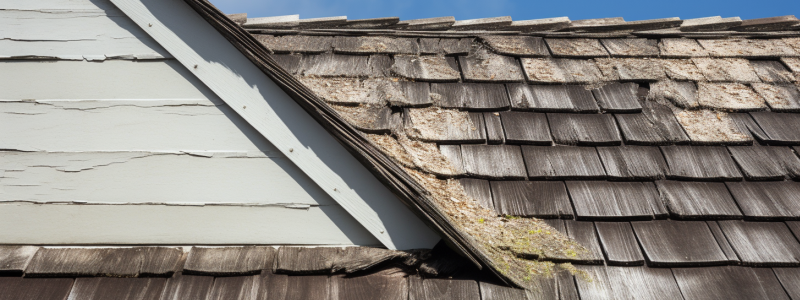
Next Steps with BM Roofing
How to Get in Touch with BM Roofing for Roofing Services
Now that you have acknowledged the importance of regular roof maintenance, you’re ready to take the next step in ensuring the longevity and health of your roof, BM Roofing is here to assist you. You can reach us in several convenient ways:
- Phone: Call us at 303.443.5843 for immediate assistance or to schedule an appointment.
- Website: Visit our website for comprehensive information about our services, customer testimonials, and an online contact form.
Contact BM Roofing today to ensure your roof remains in optimal condition, safeguarding your home or business for years to come. Our team of experts is ready to provide you with the quality service and peace of mind you deserve. We look forward to serving you and keeping your roof in its best possible condition.
Things to Consider When Replacing a Roof
For both homeowners and business owners, the roof serves as a fundamental shield, safeguarding the interior of your property from weather extremes and environmental elements. Its role extends beyond mere protection; a well-maintained roof contributes to energy efficiency, enhances the aesthetic appeal of your property, and plays a significant part in determining its overall value. However, the decision to replace a roof is not one to be taken lightly. In this comprehensive guide, we will explore the key aspects of “Things to consider when replacing a roof.”
This article is tailored for individuals who may not have extensive knowledge about roofing but are facing the need to make this crucial decision. We aim to provide clear, authoritative information that demystifies the process, helping you navigate through the myriad of choices and considerations with confidence.
We will discuss various factors such as understanding your specific roofing needs, choosing the right materials, finding a qualified contractor, budgeting effectively, comprehending the replacement process, and ensuring long-term maintenance and care. Each of these elements plays a vital role in not only ensuring a successful roof replacement but also in securing the longevity and effectiveness of your investment.
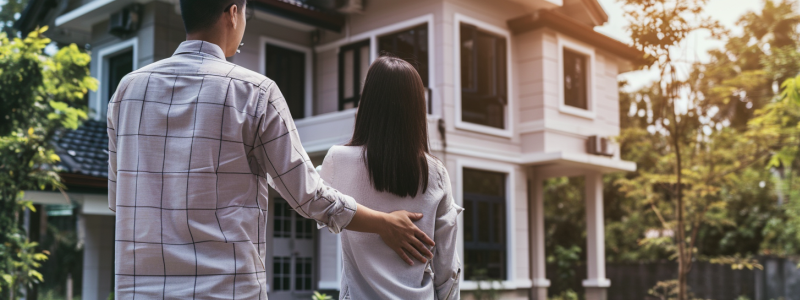
Understanding Your Roofing Needs
When contemplating a roof replacement, the first step is to thoroughly understand your specific roofing needs. This understanding is crucial in ensuring that the new roof not only addresses current issues but also aligns with your long-term requirements. Here are key factors to consider:
- Current Roof Condition: Examine the age and state of your existing roof. Look for signs of wear such as missing shingles, leaks, or frequent repairs. Understanding the extent of damage or deterioration helps in deciding whether a repair or a complete replacement is necessary.
- Climate Considerations: Your local climate plays a significant role in determining the suitable roofing material. For instance, areas with heavy snowfall require a sturdy roof, while hot climates might benefit from reflective roofing materials to enhance energy efficiency.
- Building Use and Requirements: The purpose of your building influences your roofing choice. A commercial building might have different roofing needs compared to a residential property. Consider factors like insulation, load-bearing capacity, and ventilation.
- Aesthetic Preferences: The appearance of your roof impacts the overall look of your property. Consider the architectural style of your building and your personal preferences when selecting materials and designs.
- Future Plans: Think about your long-term plans for the property. If you intend to sell in the near future, you might prioritize curb appeal and resale value. For long-term ownership, durability and maintenance requirements become more important.
By carefully evaluating these aspects, you can gain a clearer understanding of what you need from your new roof. This initial assessment is a critical step in ensuring that your roof replacement aligns with both your immediate needs and future goals, setting the foundation for the subsequent steps in the roof replacement process.
Choosing the Right Materials
The choice of roofing materials is a pivotal decision in the roof replacement process. It affects not only the appearance and durability of your roof but also its cost and maintenance requirements. Here’s a guide to help you navigate through the options:
- Asphalt Shingles:
- Pros: Cost-effective, widely available, and come in various colors and styles.
- Cons: Shorter lifespan compared to some other materials; not as durable in extreme weather conditions.
- Metal Roofing:
- Pros: Long-lasting, energy-efficient, and can withstand severe weather. Ideal for areas with heavy snowfall or high winds.
- Cons: Higher initial cost; installation requires specialized skills.
- Tile Roofing (Clay or Concrete):
- Pros: Extremely durable, fire-resistant, and offers a unique aesthetic appeal.
- Cons: Heavy, requiring strong structural support; more expensive than asphalt.
- Slate Roofing:
- Pros: Offers a distinctive look with excellent durability and a long lifespan.
- Cons: Among the most expensive; heavy and requires a reinforced roof structure.
- Wood Shingles or Shakes:
- Pros: Natural appearance, with some energy-efficient properties.
- Cons: Requires regular maintenance; not ideal in fire-prone areas.
- Synthetic Roofing Materials:
-
- Pros: Can mimic the look of wood, slate, or tile; often lighter and less expensive.
- Cons: Varying quality; newer on the market, so longevity is less proven.
When thinking about “Things to Consider When Replacing a Roof”, and while selecting roofing materials, you should consider factors such as your budget, the climate in your area, the architectural style of your property, and maintenance requirements. It’s also important to think about the long-term implications of your choice, such as the lifespan of the material and any ongoing maintenance needs.
Finding a Qualified Contractor
The selection of a qualified roofing contractor is a crucial step in the roof replacement process. A skilled and reliable contractor ensures that your roof is installed correctly, adhering to safety standards and industry best practices. Here are key points to consider when choosing a roofing contractor:
- Check Credentials and Experience:
- Look for contractors with a solid track record and ample experience in roof replacement.
- Ensure they are licensed and insured, providing protection against accidents or damage.
- Read Reviews and Seek References:
- Check online reviews and ask for references from past clients.
- This step provides insights into the contractor’s reliability, quality of work, and customer service.
- Get Multiple Quotes:
- Obtain quotes from several contractors to compare prices and services.
- Remember, the cheapest option is not always the best. Quality and reliability are paramount.
- Ask About Warranties and Guarantees:
- Inquire about the warranties offered on both materials and workmanship.
- A good contractor stands behind their work with substantial warranties.
- Communication is Key:
- Choose a contractor who communicates clearly and promptly.
- Good communication throughout the project is essential for a smooth process.
- Local Knowledge and Compliance:
- A local contractor will be familiar with regional weather conditions and building codes.
- They can provide tailored advice and ensure compliance with local regulations.
Selecting the right contractor is a significant aspect of “Things to consider when replacing a roof.” A competent contractor not only brings expertise to your project but also peace of mind, knowing that your investment is in good hands. Take the time to research and choose a contractor who meets these criteria to ensure a successful and satisfactory roof replacement experience.

Budgeting for Your Roof Replacement
Budgeting effectively for a roof replacement is a critical component of the project. It involves understanding the costs and planning your finances to ensure the project is both affordable and of high quality. Here are essential points to consider for budgeting:
- Understand the Cost Factors:
- Roof size, material choice, labor, and any additional repairs or structural changes significantly influence the overall cost.
- Be aware that higher-quality materials and experienced labor might cost more upfront but can offer better longevity and value.
- Get Detailed Estimates:
- Obtain itemized estimates from contractors to understand where your money is going.
- This transparency helps in comparing quotes and ensuring you are paying for necessary services.
- Plan for Unexpected Expenses:
- Set aside a contingency fund, typically 10-20% of the project cost, for unforeseen issues like structural repairs.
- Roof replacements can reveal hidden problems that need addressing.
- Explore Financing Options:
- If paying upfront is challenging, consider financing options like loans or payment plans offered by contractors.
- Research and compare different financing options to find one that suits your financial situation.
- Consider Long-term Savings:
- Investing in energy-efficient materials or durable roofing can lead to long-term savings through reduced energy bills and maintenance costs.
- Evaluate the long-term financial benefits alongside the initial investment.
- Check for Rebates and Incentives:
- Some regions offer rebates, tax credits, or incentives for using certain materials or for energy-efficient upgrades.
- Research local programs that might help offset some of the costs.
A well-planned budget ensures that you can afford a quality roof replacement without financial strain. It also helps in making informed decisions about materials and contractors, balancing cost with quality and long-term benefits. By carefully planning your finances, you can invest in a roof that not only protects your property but also adds value to it.
Long-term Maintenance and Care
After successfully replacing your roof, it’s important to focus on long-term maintenance and care to ensure its longevity and optimal performance. Regular maintenance not only extends the life of your roof but also helps in identifying potential issues before they become major problems. Here are key strategies for maintaining your new roof:
- Regular Inspections:
- Schedule professional inspections at least once a year, ideally after severe weather seasons.
- Regular inspections help in detecting minor damages or wear and can prevent costly repairs.
- Keep the Roof Clean:
- Remove debris like leaves, branches, and dirt that can accumulate over time.
- Debris can trap moisture, leading to rot or mold, and can block drainage systems.
- Gutter Maintenance:
- Keep gutters and downspouts clean and clear of obstructions.
- Properly functioning gutters are essential for water drainage and preventing water damage.
- Monitor for Damage:
- Be vigilant for signs of damage, such as missing or broken shingles, leaks, or cracks.
- Early detection and repair of these issues can prevent more extensive damage.
- Trim Overhanging Tree Branches:
- Regularly trim branches that hang over your roof.
- This reduces the risk of damage from falling branches and minimizes debris accumulation.
- Ventilation and Insulation:
- Ensure your attic is well-ventilated and properly insulated.
- Good ventilation and insulation prevent heat and moisture buildup, which can damage your roof over time.
- Address Issues Promptly:
- If you notice any problems, address them promptly to prevent further damage.
- Delaying repairs can lead to more extensive and expensive issues.
By investing time and resources in regular maintenance, you can protect your investment and ensure that your roof remains in excellent condition for years to come. A well-maintained roof not only provides security and protection but also adds to the aesthetic and functional value of your property.
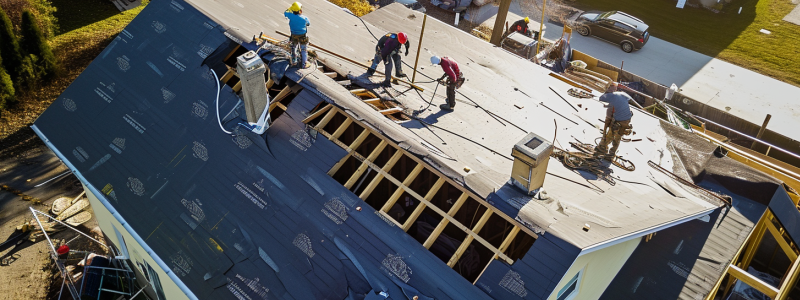
Ready to Start Your Roof Replacement Journey?
If you’re pondering over the topic of “Things to Consider When Replacing a Roof”, consider reaching out to expert guidance, B&M Roofing is here to help. With our team of experienced professionals, we ensure a seamless and high-quality roof replacement experience. Visit B&M Roofing today to schedule a consultation and take the first step towards a durable, aesthetically pleasing, and long-lasting roof for your property.
Does a New Roof Increase Home Value
For homeowners and business owners, the decision to invest in property improvements often comes with a mix of practical and financial considerations. One of the most significant aspects of any property is its roofing. A common and crucial question arises in this context: Does a new roof increase home value? This article is designed to address this query, providing clear, authoritative, and informative insights, particularly for those who may not have an in-depth understanding of roofing and its implications.
Whether you are considering a roofing upgrade or simply seeking to understand the value it can add to your property, this article aims to equip you with the necessary information to make informed decisions. Let’s embark on this journey to uncover the true impact of a new roof on home value.

The Impact of a New Roof on Home Value
When considering home improvements, the question of value addition is paramount. Specifically, homeowners and business owners often ponder, “Does a new roof increase home value?” The answer is multifaceted, encompassing various aspects from market appeal to functional upgrades.
Enhanced Market Value
- Immediate Curb Appeal: A new roof dramatically improves the appearance of your property. This visual enhancement is crucial when it comes to first impressions, especially in the real estate market. A well-designed, modern roof can transform the look of an older home, making it more appealing to potential buyers.
- Energy Efficiency: Modern roofing materials are often designed to be more energy-efficient. This means they can help keep your home cooler in summer and warmer in winter, leading to lower energy bills. This efficiency is not only a selling point but also adds tangible value to your property.
- Insurance Advantages: Newer roofs are less likely to have issues, which can lead to lower homeowners’ insurance premiums. Insurance companies often recognize the reduced risk of damage with a new roof, translating into financial savings for the homeowner.
Expert Opinions and Market Data
- Real Estate Insights: Real estate experts consistently highlight the importance of a new roof in property valuation. A new roof is frequently listed as one of the top factors influencing home sales, reassuring potential buyers of fewer immediate maintenance concerns.
- Return on Investment (ROI): According to industry studies, the ROI of a new roof can be significant. While the exact figures vary, homeowners can expect to recover a substantial portion of the roofing cost through increased home value. This ROI makes roofing upgrades one of the more financially sound home improvement projects.
Durability and Longevity
- Long-Term Benefits: New roofing technologies not only enhance the aesthetic appeal but are also built to last longer. This longevity means less frequent replacements and repairs, a factor that is highly attractive to potential buyers who are often looking for homes that won’t require immediate maintenance work.
Aesthetic and Functional Benefits of a New Roof
While the primary question, “Does a new roof increase home value?” focuses on financial aspects, it’s equally important to consider the aesthetic and functional benefits a new roof provides. These elements play a crucial role in enhancing both the appeal and the efficiency of a property.
Aesthetic Improvements
- Modern Look: A new roof can significantly modernize the appearance of your home. With a variety of materials and colors available, it can complement your home’s architectural style and increase its curb appeal.
- Uniformity and Symmetry: Over time, older roofs can develop inconsistencies in color and texture. A new roof offers a uniform, cohesive look, which is visually pleasing and suggests meticulous maintenance.
Functional Advantages
- Enhanced Insulation: Modern roofing materials are often designed with better insulation properties. This means improved temperature regulation inside the home, leading to a more comfortable living environment and reduced energy costs.
- Leak Prevention: One of the most practical benefits of a new roof is its ability to prevent leaks. Water damage can be costly and harmful to both the structure of your home and the health of its inhabitants. A new roof ensures a watertight barrier against the elements.
- Improved Ventilation: Proper roof ventilation is crucial for regulating temperature and moisture levels in the attic. A new roof can provide better ventilation, preventing issues like mold growth and wood rot.
Technological Advancements
- Innovative Materials: The roofing industry has seen significant technological advancements. New materials offer enhanced durability, better environmental sustainability, and even integrated solar technology.
- Customization Options: Today’s roofing materials come in a wide range of styles and colors, allowing homeowners to customize their roof to match their personal taste and the architectural style of their home.
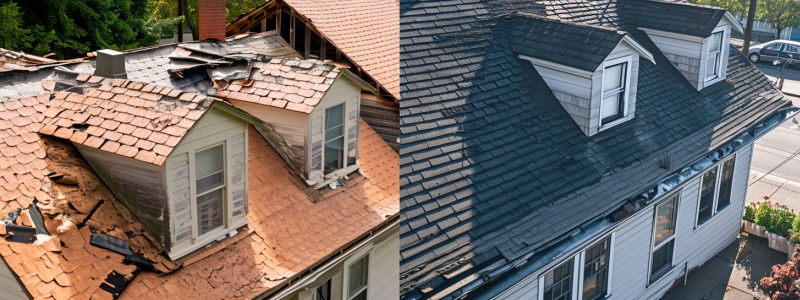
Buyer Perception and Market Trends
Understanding how a new roof influences buyer perception and aligns with current market trends is essential in answering the question, “Does a new roof increase home value?” This section delves into the psychological impact a new roof has on potential buyers and how it reflects broader trends in the real estate market.
Influencing Buyer Perception
- Sense of Security: A new roof offers potential buyers a sense of security, knowing that they are unlikely to face immediate roofing issues or expenses. This peace of mind can be a decisive factor in the home-buying process.
- Perceived Maintenance: Homes with new roofs are often perceived as better maintained overall. This perception can extend to other areas of the home, creating a general impression of care and attention to detail.
- Ready to Move In: Many buyers prefer homes that don’t require immediate work. A new roof enhances the ‘move-in ready’ appeal of a property, making it more attractive to those looking for a hassle-free purchase.
Reflecting Market Trends
- Eco-Friendly Choices: With a growing emphasis on sustainability, eco-friendly roofing materials are becoming increasingly popular. Homes with roofs that boast energy-efficient features or environmentally friendly materials are often more appealing in today’s market.
- Technological Integration: The integration of technology, such as solar panels, into roofing materials is a trend gaining momentum. Properties that embrace these advancements can stand out in the market, attracting buyers interested in modern, energy-efficient homes.
- Resilience in Weather Conditions: In areas prone to extreme weather, roofs designed to withstand such conditions are highly valued. This resilience can be a significant selling point, reflecting a trend towards more durable and long-lasting home features.
Market Data Insights
- Comparative Market Analysis (CMA): Real estate agents often use CMAs to evaluate home values. Properties with new roofs typically fare better in these analyses, as they compare favorably against similar properties with older roofing.
- Home Inspection Reports: A new roof can positively influence home inspection reports, a critical component in the home buying and selling process. Favorable inspection results can lead to smoother transactions and potentially higher sale prices.
Long-Term Investment and Cost-Benefit Analysis
In addressing the question, “Does a new roof increase home value?” it’s crucial to consider the long-term investment perspective and conduct a cost-benefit analysis. This section focuses on the financial implications of installing a new roof, weighing the initial costs against the potential long-term gains.
Long-Term Financial Benefits
- Increased Property Value: As previously discussed, a new roof can significantly boost your home’s market value. This increase often surpasses the initial investment, especially in competitive real estate markets.
- Energy Savings: The improved insulation and energy efficiency of modern roofing materials can lead to substantial savings on utility bills over time. These savings contribute to the overall financial benefits of a new roof.
- Reduced Maintenance Costs: A new roof, particularly one with advanced materials and technology, often requires less maintenance. This reduction in upkeep expenses over the years can add up to considerable savings.
Cost-Benefit Analysis
- Initial Investment: The upfront cost of a new roof varies depending on the size of the property, the materials chosen, and labor costs. It’s important to get multiple quotes and consider different material options to find the best balance between cost and quality.
- Return on Investment (ROI): While the ROI can vary, homeowners can generally expect a significant percentage of the roofing cost to be recouped in home value. The exact ROI depends on factors like the local real estate market and the quality of the roofing installation.
- Insurance Premium Reductions: As mentioned earlier, a new roof can lead to lower home insurance premiums due to the decreased risk of damage. This reduction should be factored into the overall cost-benefit analysis.
Considering Financing Options
- Loans and Credits: Homeowners may consider various financing options, such as home improvement loans or lines of credit, to manage the cost of a new roof. Some regions also offer special programs or credits for energy-efficient home improvements.
- Long-Term Perspective: When evaluating financing options, it’s important to consider the long-term implications and ensure that the investment aligns with your financial planning.
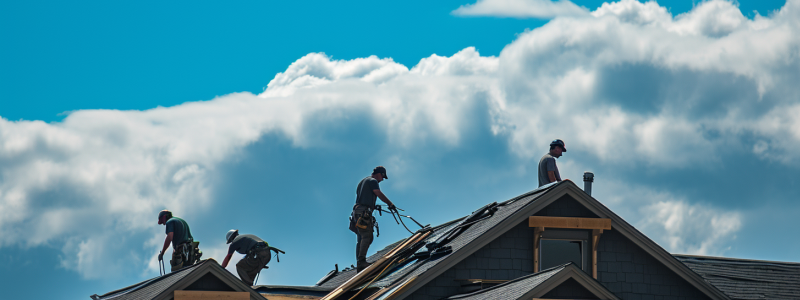
Last Words
In conclusion, for homeowners and business owners, investing in a new roof is a decision that goes beyond mere aesthetic enhancement. It is a strategic move that can significantly boost the value and functionality of your property.
Visit B&M Roofing Contractors to discover how we can transform your property. Our team of experienced professionals is dedicated to providing top-quality roofing solutions that not only enhance the aesthetic appeal of your home but also significantly increase its market value. Whether you’re looking for modern, energy-efficient roofing options or just need reliable, long-lasting materials, we have you covered. Get in touch with us today for a personalized quote and start your journey towards a smarter, more valuable home investment with BM Roofing Contractors. Your home deserves the best – let us help you achieve it.
Average Roof Life
Welcome to the world of roofing, where understanding the ‘average roof life’ is not just about numbers—it’s about peace of mind for your home or business in Colorado. The term ‘average roof life’ refers to the typical duration a roof can be expected to last before it needs significant repair or replacement. This is more than just a statistic; it’s a crucial piece of knowledge that safeguards your property against the elements and helps you plan for the future.
Why is knowing about roof lifespan so important? For starters, it’s a key factor in maintaining the safety, aesthetics, and value of your property. A well-maintained roof is like a trusty helmet for your home—it’s the first line of defense against snow, rain, and the bright Colorado sun. Plus, being aware of your roof’s lifespan helps you budget for repairs or replacement, avoiding the sticker shock that can come with sudden roofing emergencies.
In Colorado’s dynamic climate, where the weather can be as unpredictable as a Broncos game, understanding the average life of your roof is particularly vital. It’s not just about enduring the present; it’s about being prepared for the future. So, let’s embark on this journey to uncover the mysteries of roof longevity and ensure that the only thing going over your head is a roof that’s built to last.
Remember, a solid roof overhead is not just a part of your building; it’s the guardian of your peace of mind. And that’s a responsibility we take as seriously as you do.
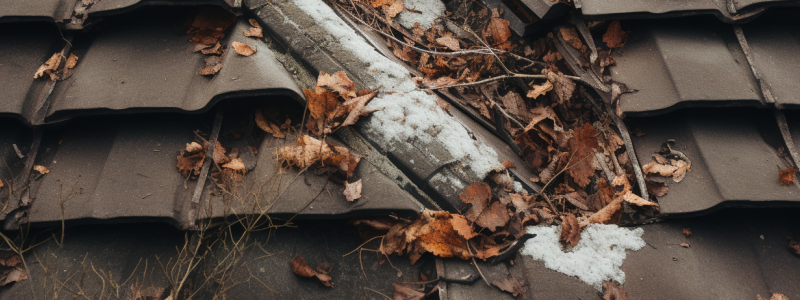
Factors Affecting Roof Life
When it comes to the longevity of your roof, several key factors come into play, especially in a place like Denver or Arvada, where the weather can be as varied as the landscape. Let’s break down these elements:
- Climate: Colorado’s unique climate, characterized by its dry air, high elevation, and sudden temperature shifts, can take a toll on roofing materials. The intense UV exposure at high altitudes can degrade roofing materials more quickly than in other regions.
- Material Quality: The quality of the materials used in your roof is non-negotiable. Higher quality materials may come with a steeper price tag, but they often translate to a longer lifespan for your roof.
- Installation: A roof is only as good as its installation. Properly installed roofs can withstand Denver’s unpredictable weather patterns much better than those that are not.
- Maintenance: Regular maintenance is the key to longevity. This includes inspections, prompt repairs, and cleaning. Neglect can lead to premature aging of your roof.
- Other Factors: These include the roof design, the color of the roofing materials (darker colors absorb more heat), ventilation, and insulation quality.
For Denver homeowners, understanding these factors is crucial. According to a local roofing expert, roofs in Colorado can last between fifteen and thirty years, but this range can vary widely based on the factors mentioned above. It’s a testament to the importance of not just the materials chosen, but also the quality of installation and ongoing maintenance.
Remember, while the initial cost is an important consideration, the longevity and performance of your roof in Denver’s climate are what truly determine its value over time. Investing in quality materials and workmanship now can save you from costly repairs or replacements down the line.
Types of Roofing Materials and Their Lifespan
Choosing the right roofing material is a decision that homeowners in Denver will live with for decades. Each material comes with its own average roof life expectancy, and here’s a comparison to help you weigh your options:
- Composite Asphalt Shingles: These are among the most common roofing materials due to their cost-effectiveness and ease of installation. They can last anywhere from 15 to 40 years, with the lifespan varying based on the quality of the materials and maintenance.
- Architectural Shingles: A step up from the standard asphalt shingle, architectural shingles offer a longer lifespan of 30 to 50 years due to their durability and quality.
- Clay Tiles: Known for their classic aesthetic and durability, clay tiles can last over 50 years. They are excellent for weather resistance, which is a significant consideration in Denver’s climate.
- Metal Roofing: Metal roofs are becoming increasingly popular due to their longevity and resistance to extreme weather. A well-installed metal roof can last 40 to 70 years.
- Slate Roofing: Slate is one of the longest-lasting roofing materials, with a lifespan that can exceed 100 years. It’s a premium choice that offers both durability and timeless beauty.
- Wood Shingles: While offering a natural look, wood shingles have a shorter lifespan of about 20 to 30 years and require more maintenance, especially in areas prone to moisture and wildfire.
For a detailed comparison, some sources offer excellent guides on the best roofing materials for longevity, providing homeowners with a comprehensive look at how different materials stack up against each other.
When selecting roofing materials, consider not only the initial cost but also the long-term benefits. A roof that may cost more upfront could offer significant savings over time due to its extended lifespan and reduced maintenance needs.
The Financial Aspect
Investing in your roof is investing in the future of your home or business. Understanding the cost implications of roof maintenance and replacement is crucial for effective budgeting and financial planning. Here’s what you need to know:
- Maintenance Costs: Regular maintenance is essential for extending the average roof life and can prevent costly repairs down the line. Minor repairs, such as fixing leaks or replacing damaged shingles, can range from $150 to $400 on average. However, neglecting these issues can lead to more significant problems, which are far more expensive to address.
- Replacement Costs: When a roof reaches the end of its average lifespan, replacement becomes necessary. According to Forbes, the cost for roof replacement can vary widely, with averages ranging from $5,700 to $12,500. Factors influencing this cost include the size of the roof, the materials chosen, and the complexity of the installation.
- Long-Term Savings: While the upfront costs of high-quality materials and professional installation may be higher, they can lead to long-term savings by reducing the need for frequent repairs or premature replacement.
- Insurance Considerations: Some insurance policies may cover part of the cost of roof repairs or replacement, especially if the damage is due to a covered event. It’s wise to review your policy and understand what is and isn’t covered.
- Value Increase: A new or well-maintained roof can increase the value of your property. It’s an investment that not only protects your property but also contributes to its market appeal.
Budgeting for roof maintenance and understanding the financial implications of roof repair and replacement are essential for any property owner. By staying proactive with regular inspections and timely repairs, you can manage these costs effectively and ensure your roof remains in top condition for years to come.

Warning Signs and Maintenance Tips
Your roof is speaking to you, and it pays to listen. Recognizing the warning signs that your roof needs attention can save you from costly repairs or even a full replacement. Here are some signs to watch for and maintenance tips to keep your roof in top shape:
Warning Signs
- Sagging Roof: This is a clear indicator that there’s structural damage that needs immediate attention.
- Water Leaks: If you notice water stains on your ceilings or walls, it’s time to inspect your roof for leaks.
- Damaged Shingles: Look out for shingles that are cracked, buckling, or missing entirely.
- Blocked Gutters: Gutters clogged with shingle granules are a sign of roof wear.
- High Energy Bills: Unexpected increases in your energy bills could be due to poor roof insulation or ventilation.
Maintenance Tips
- Regular Inspections: Conduct or schedule a professional roof inspection at least once a year.
- Clean Your Roof: Remove debris, such as leaves and branches, which can retain moisture and rot your roof.
- Trim Overhanging Branches: This prevents damage from fallen limbs and reduces debris accumulation.
- Ensure Proper Ventilation: Adequate attic ventilation is critical to prevent moisture buildup and heat accumulation.
- Address Repairs Promptly: Don’t delay fixing identified issues; small problems can quickly become big ones.
Always search for valuable tips to extend your roof’s lifespan and ensure it continues to protect your home effectively. Remember, proactive maintenance is the most cost-effective way to manage your roof’s health.
When to Consider Replacement
Deciding when to replace your roof is a significant decision that can impact both the safety and the financial well-being of your home. Here are some considerations to help you determine the right time for a roof replacement:
- Age of the Roof: The average roof life varies by material, but if your asphalt shingle roof is over 20 years old, it might be time to consider a replacement.
- Widespread Damage: If you’re facing extensive damage, such as widespread leaks or numerous missing shingles, a repair might not suffice.
- Sagging: This is a serious sign of structural issues, possibly due to long-term water damage or structural failure.
- Moss and Algae Growth: While some growth can be cleaned, excessive moss or algae can indicate moisture problems that may require a roof replacement.
- Energy Inefficiency: If your energy bills are rising without a clear reason, your roof might be the culprit due to poor insulation or ventilation.
Roof replacement is a considerable investment, and it’s essential to make this decision based on a thorough inspection and consultation with roofing professionals.
Choosing the Right Roofing Service
Selecting the right roofing contractor is as crucial as choosing the best roofing material. Here are some tips to ensure you partner with a professional who will do the job right:
- Research Credentials: Look for contractors with a solid track record, proper licensing, and insurance. This protects you against any mishaps during the roofing process.
- Check References and Reviews: A reputable contractor should have a list of references. Additionally, online reviews can provide insight into their work ethic and customer satisfaction.
- Get Detailed Estimates: A professional roofer should provide a detailed estimate, including the scope of work, the materials to be used, and the timeline for completion.
- Communication is Key: Choose a contractor who communicates clearly and promptly. You want someone who will keep you informed throughout the process.
- Warranty Offers: Ensure the contractor offers a warranty not only on the materials but also on their workmanship.
A good roofing contractor is not just a service provider but a partner in maintaining the integrity and longevity of your roof. Take the time to choose wisely, and you’ll be rewarded with a roof that stands the test of time.
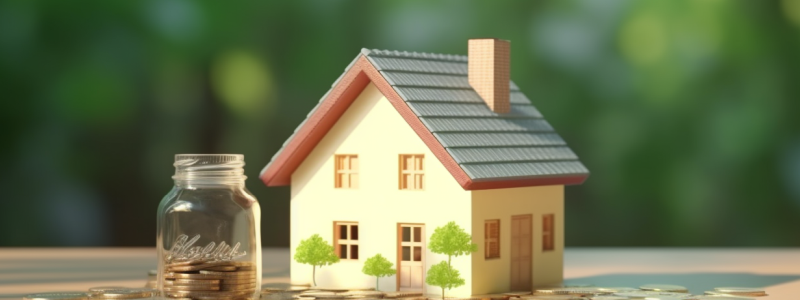
Always Ask the Professionals
As we’ve journeyed through the ins and outs of ‘average roof life,’ it’s clear that the roof over your head is more than just a structural feature—it’s a long-term investment in the safety and security of your Denver property. From understanding the factors that affect roof lifespan to recognizing when it’s time for a replacement, we’ve covered the essential knowledge you need to make informed decisions about your roofing needs.
Here are the key takeaways:
- Knowledge is Power: Knowing the average lifespan of your roofing material and the factors that affect it can help you plan and budget for future maintenance and replacements.
- Maintenance Matters: Regular inspections and upkeep are crucial in extending the life of your roof and preventing minor issues from becoming major expenses.
- Quality Counts: Investing in high-quality materials and professional installation pays off in the long run, potentially saving you money and hassle.
- Professional Partnerships: Choosing the right roofing service is about more than just finding someone to do the job—it’s about finding a partner who will ensure the longevity and durability of your roof.
As you consider the future of your roof, remember that proactive steps taken today can prevent costly repairs tomorrow. Whether you’re scheduling routine maintenance or facing the prospect of a full replacement, approach each decision with the confidence that comes from being well-informed. Take action today by scheduling a professional inspection or consultation with B&M Roofing of Colorado to assess the health of your roof.
Roof Cost Calculator
Whether you’re a homeowner or a business owner, understanding the ins and outs of roofing costs is not just about keeping the rain out—it’s about smart financial planning and protecting the value of your property.
Why Accurate Roofing Cost Estimates Matter
- Budgeting: Just like any home improvement project, a new roof requires a well-planned budget. Using a roof cost calculator helps you avoid the raincloud of unexpected expenses, ensuring that your finances stay as dry and secure as your freshly shingled roof.
- Property Value: A roof is more than just a functional necessity; it’s a long-term investment into your property’s worth. Accurate cost estimations contribute to making informed decisions that can enhance the curb appeal and market value of your property.
By the end of this article, you’ll see that a roof cost calculator isn’t just a tool—it’s your financial umbrella in the stormy world of roofing expenses. Stay tuned as we unfold the layers of roofing costs, just like we would a well-constructed roof.
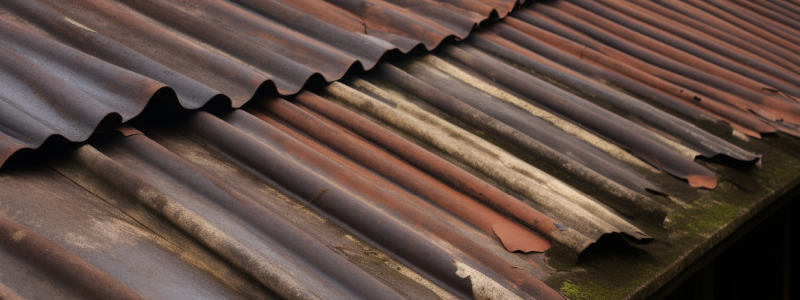
Understanding the Roof Cost Calculator
Navigating the financial aspects of roofing can be as complex as the layers of a roof itself. But fear not! The roof cost calculator is your trusty guide through this process, simplifying what could otherwise be an overwhelming task.
What is a Roof Cost Calculator?
In simple words, it’s an online tool that provides you with an estimated cost of replacing or repairing your roof without having to climb a ladder or know the intricacies of roofing. It takes into account various factors such as size, materials, and labor to give you a ballpark figure that you can use to plan your budget.
How Does It Work?
- Input Your Details: You’ll typically enter details about your roof, such as dimensions and preferred materials.
- Algorithm Magic: The calculator uses these inputs, along with data on current material costs and labor rates, to estimate your potential roofing costs.
- Instant Estimates: In a matter of minutes, you’ll have a cost estimate that helps you gauge the financial scope of your roofing project.
Remember, while a roof cost calculator is a fantastic starting point, it’s always wise to follow up with professional quotes for the most accurate financial planning. Stay tuned as we delve into the factors that can influence the cost of your roofing project.
Factors Influencing Roofing Costs
When it comes to roofing, the price tag is about as variable as the weather patterns that affect your roof’s wear and tear. Understanding the factors that influence roofing costs can help you navigate the estimates you’ll get from a roof cost calculator. Here’s a breakdown of the main components:
Types of Roofing Materials
- Asphalt Shingles: These are the most common and generally the most affordable roofing material.
- Metal Roofing: Durable and long-lasting, metal can be pricier but may offer better long-term value.
- Tiles: Whether clay or concrete, tiles offer a distinct look and can vary widely in price.
Labor and Installation
- Contractor Expertise: Skilled labor isn’t cheap, but it’s worth every penny for a job well done.
- Job Complexity: The more complex the roof, the higher the labor costs.
Roof Size and Design
- Square Footage: Larger roofs require more materials and more labor.
- Slope and Pitch: Steeper roofs are trickier to work on and can increase costs.
Geographic Location
- Local Labor Rates: These can vary significantly from one region to another.
- Climate: Areas with harsh weather may require more durable materials, affecting costs.
Remember, while these factors can give you a ballpark figure, there’s no substitute for a personalized quote. Stay tuned as we explore additional costs that might not be immediately apparent when planning your roofing project.
Additional Costs to Consider
When planning for a new roof, it’s crucial to look beyond the basic estimate your roof cost calculator provides. There are often additional expenses that, if not accounted for, can cause your budget to balloon like a hot air balloon in a clear blue sky. Let’s ensure your budget stays grounded by considering these potential costs.
Permits and Inspections
- Building Permits: Depending on where you live, you may need a permit to start roofing work, which can add to the overall cost.
- Inspections: Post-installation inspections might be required to ensure the work meets local building codes.
Repairs to Existing Structure
- Decking Repairs: If the structure beneath your shingles is damaged, it will need to be repaired before a new roof can be installed.
- Gutter Work: Sometimes, gutter systems need to be repaired or replaced in tandem with roofing work.
Unforeseen Complications
- Weather Delays: Bad weather can delay work and increase labor costs.
- Old Roof Removal: The cost of removing and disposing of the old roof can vary widely.
Remember, a well-informed homeowner is a well-prepared homeowner. By considering these additional costs, you can create a more accurate budget for your roofing project. Stay tuned for our next section, where we’ll share some insider tips on how to save money on your roofing project without cutting corners.
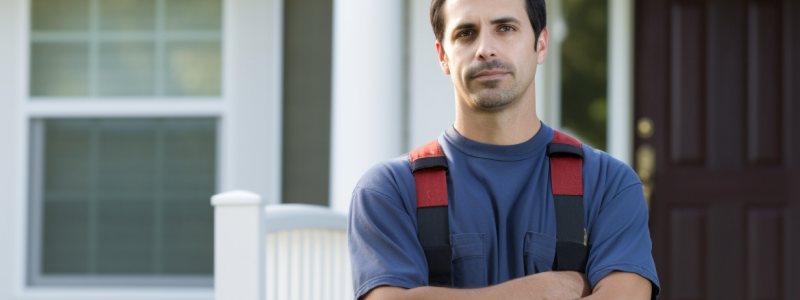
How to Save Money on Your Roofing Project
A new roof doesn’t have to mean a new mortgage. With some strategic planning and savvy decision-making, you can trim the fat from your roofing budget without compromising on quality. Here are some golden nuggets of advice to keep your wallet happy:
Choose the Right Materials
- Cost vs. Longevity: Sometimes, spending a bit more upfront on durable materials can save you money in the long run.
- Seasonal Sales: Keep an eye out for discounts on materials during off-peak seasons.
Time Your Project Strategically
- Off-Peak Discounts: Roofing contractors may offer lower rates during slower seasons.
- Weather Patterns: Planning around your region’s weather can prevent costly delays.
Get Multiple Quotes
- Compare Contractors: Don’t settle for the first estimate. Get several quotes to ensure you’re getting the best deal.
- Negotiate: Use the quotes to negotiate better rates with your preferred contractor.
Consider DIY Aspects
- Do Some Work Yourself: If you’re handy, you might be able to take on some of the work, like disposal of the old materials.
Remember, a little research and preparation can lead to significant savings. Up next, we’ll tackle some common questions about roof replacement costs to help you further understand the financial side of keeping a solid roof over your head.
Common Questions About Roof Replacement Costs
Embarking on a roof replacement project can feel like navigating a maze with questions at every turn. But don’t worry, we’ve got the answers to some of the most common queries that homeowners have. Let’s clear the air and provide you with the knowledge you need to move forward confidently.
How Long Do Roofing Materials Last?
- Asphalt Shingles: Typically, they last 15-30 years.
- Metal Roofing: Can last 40-70 years, depending on the material.
- Tiles: Clay and concrete tiles can last over 50 years.
Are There Warranties?
- Most roofing materials come with a manufacturer’s warranty, and many contractors offer additional guarantees on workmanship.
What Are the Benefits of Professional Installation?
- Expertise: Professionals have the know-how to install your roof correctly, which is crucial for longevity and performance.
- Safety: Roofing can be dangerous. Professionals have the equipment and training to do the job safely.
- Time-Saving: A professional team can complete the job much faster than DIY.
Armed with this knowledge, you’ll be better equipped to make informed decisions about your roofing project. Next, we’ll wrap up with our conclusion, reinforcing the value of a roof cost calculator and the importance of professional guidance.
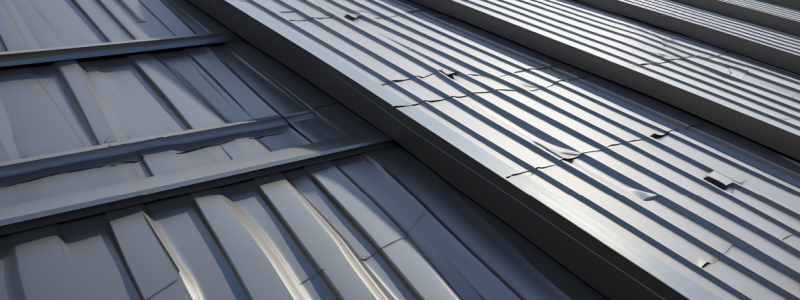
Your Next Steps
As we’ve navigated the complexities of roofing costs together, it’s clear that a roof cost calculator is more than just a handy tool—it’s an essential ally in your roofing journey. It empowers you with knowledge, preparing you for discussions with contractors and helping you to understand the financial commitment involved.
The Value of a Roof Cost Calculator
- Informed Decisions: With a clearer view of potential costs, you can make choices that align with your budget and your property’s needs.
- Planning and Budgeting: A roof cost calculator helps you to plan ahead, ensuring that you’re financially prepared for your roofing project.
- Professional Insight: While a calculator gives you a starting point, a detailed quote from a professional roofer tailors the estimate to your specific situation.
We encourage you to reach out to BM Roofing for a comprehensive quote and professional roofing services. Their expertise and customer-centric approach will provide you with peace of mind and a roof that lasts.
Workmanship Warranty Roofing
Protect your roofing investment with a reliable “Workmanship Warranty Roofing.” Understanding the difference between manufacturer and workmanship warranties is crucial. While manufacturers guarantee against defects in their products, it’s the workmanship warranty that ensures quality installation. Faulty installations can lead to premature roof failures, emphasizing the importance of hiring reputable Colorado roofing contractors. This article delves into the nuances of roofing warranties, signs of poor roofing practices, and the significance of choosing contractors who back their work with solid guarantees. B&M Roofing sets the standard with a five-year craftsmanship warranty, ensuring homeowners of quality and protection for their roofing investment.
Your roof is a major investment, and, barring weather damage, you have every reason to expect it to last its stated lifetime.
Of course, many factors apply to the lifespan of a roof including attention to ongoing and needed maintenance. In most instances, the life of a roof can span 25 or more years, provided the property is well maintained and there are preventive measures in place to ensure roof protection. Finding a reliable Colorado roofing contractor also proves to be yet another challenge and one that may impact the quality of the roofing job. That’s why it’s important to always ask about the workmanship warranty. So, how long do roofers guarantee their work? And what does a standard roofing workmanship warranty mean?
Most roofs are installed with a warranty on materials extended by the manufacturer, and most reputable roofing companies stand behind their workmanship. Because there are a lot of overlapping elements from the homeowner’s view, it can be confusing trying to understand how roofing warranties work. Let’s review some important elements of roofers’ guarantee for workmanship.
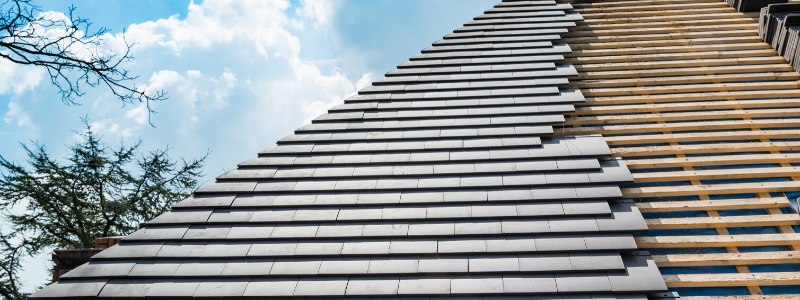
Roofing Manufacturer Warranty
Manufacturers typically guarantee their shingles and other residential roofing materials with a warranty on the exact style a homeowner selects. While this can come in any length, from 25- to 50-year coverage, it only protects you against roof failure caused by manufacturing defects. Weather damage, such as wind and hail damage, aren’t covered by warranties against defects in materials, nor are any other conditions that the manufacturer can’t control. Many manufacturer warranties require homeowners to show proof that they maintained their roof properly, as well.
It’s important to note that sometimes roofing material warranties and workmanship warranties overlap. However, this doesn’t always mean you’re protected, which is why it’s critical to continue with ongoing maintenance. Demonstrating that you’re proactive in keeping a roof in the best condition possible only serves to increase the chances that your homes’ roof is backed by some kind of guarantee. For a manufacturer’s warranty, most can cover you 20 to 50 years.
Craftsmanship Roof Warranties
How long do roofers guarantee their work? It’s often a question B&M Roofing of Colorado is asked frequently. First, note that if a roofing contractor is not backed by a workmanship warranty, it may put you at risk for faulty systems that can cost you much more in the long-run. Inquiring about the safety measures roofing contractors provide is usually step one in the process of installing a new roof and this includes protecting your investment. Hiring a highly rated Colorado roofer is ultimately going to determine the end product result and quality of work.
Manufacturer warranties don’t extend to damages caused by improper installation. Mistakes made during installation cause about half of the premature roof failures, so it’s critical homeowners choose a roofing company with well-trained installers and a warranty to back up their work. An improperly installed roof can take a couple of years to fail, so a lengthy warranty is just as important to protect your investment.
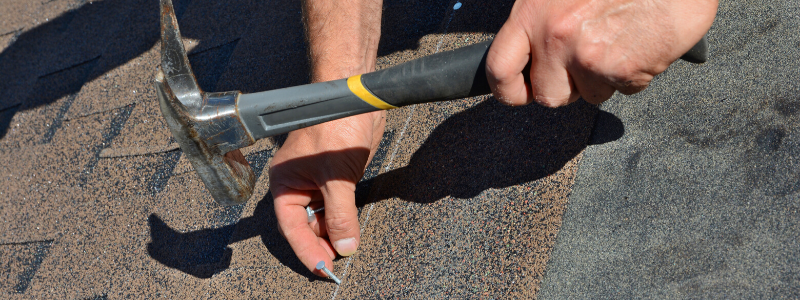
Warning Signs: Bad Roofing Practices
Beware of companies that try to force you into using only one material. Reputable roofing companies typically specialize in more than one type of roof. The company you hire should be able to provide a wide range of options based on your needs. They should be well-versed in start to finish processes and should be transparent in how work is conducted throughout the duration of the job.
Some of the warning signs you should be aware of after the installation of your new roof includes:
- Shingles curling and buckling
- Roof valleys
- Missing shingles
- Chimney flashing
- Shingle granules in the gutters
- Daylight through the roof boards
- The roof doesn’t look uniform
- New vents should be installed after every new roof installation
- Issues with nails such as overdrive, underdrive, or un-caulked nails
These warning signs can be an indication that the roof you purchased was not from a reputable source. If this has happened to you, reach out to the original roofer to see what warranty they offer on their craftsmanship. So, how long do roofers guarantee their work? The short answer is, it depends.
Standard Roofing Workmanship Warranty Explained
Basically, a standard roofing workmanship warranty covers installation and labor. You as the homeowner can be stress-free about any unexpected damages during the roof installation and/or roof repairs.
Ensuring project success requires that managers address timing, materials, warranties, and post-installation maintenance. Membrane-only warranties cover membrane failure only and do not include any labor costs for repair work. If labor costs are included, it might only be in the event that the membrane requires replacement. Craftsmanship warranties on a new roof usually offer extended protection for labor and installation. It can include items such as:
- Material
- Labor
- Insurance
- Debris removal
We always suggest that you read through the warranty to know just exactly what to expect may you need to come back to it at any time.
We’ll also help you read through any warranty before signing it.
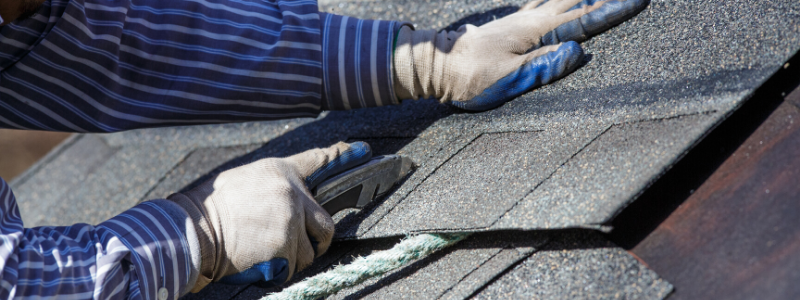
B&M Roofing and Warranties
B&M Roofing’s installation teams are experts in every type of roofing material, allowing us to extend a five-year craftsmanship warranty on all residential roofs we install. This covers all workmanship-related issues, and like a manufacturer warranty, it doesn’t apply to damage caused by weather, animals, fallen branches, or other acts of nature. Once the replacement project is complete, it is time to maintain the investment.
It is in the best interest of the manager and the organization to work with the installation contractor on a maintenance contract since they typically are responsible for workmanship repairs for the first two-five years of a favorable warranty. The industry has been on a spring and fall maintenance cycle, but managers should negotiate this point at the time of contract for the new roofing system since this can be a great bargaining tool to get a reduced rate for inspections.
When your roof fails, it’s not as important to understand how roofing warranties work, as much as know that you’re covered. Whether it’s craftsmanship or materials, B&M Roofing offers the coverage on all residential jobs to give homeowners the peace of mind they need to know their investment is protected.
Contact us today for expert roofing repairs, installations, emergency services, and much more.
Dry Rot vs Wet Rot
A strong roof over your home ensures protection from nature’s adversaries for you, your family, and your belongings. In return, homeowners must ensure they maintain the health of their roofs by eliminating any possible wet or dry rot infestations – but what is the difference between dry rot vs wet rot?
Both wet and dry rot are wood-destroying fungi that can cause structural damage to any property and should be treated immediately. Wet and dry rot may appear as a result of poor internal plumbing or penetrating moisture caused by malfunctioning guttering and downpipes.
The problem can easily fly over our heads as rot hides beneath the surface of your shingles and above attic insulation.
It’s easy to avoid wet and dry rot with regular roof inspection and maintenance. If you have spotted signs of rotting within your property, don’t hesitate to contact B&M Roofing for consultation and advice.
Differences Between Wet Rot and Dry Rot
The main difference between wet rot vs dry rot is that there are many types of wet rot. However, there is only one type of dry rot fungi. Telling the difference between the two is the first step to the successful elimination of a possible outbreak.
When it comes to dry rot and wet rot, it’s best to have both resolved immediately. However, dry rot can be more aggressive and destructive. Infestation can spread from the source to surrounding timber and other property materials. Dry wood rot attacks structure materials with lower moisture (20%-30%) and is extremely versatile, as it can spread through building fabrics and the property’s brickwork.
On the other hand, wet rot occurs more frequently but tends to be more localized. Wet rot also requires higher moisture content (30%-50%) to grow, while dry rot can germinate at lower moisture levels. Although wet rot spreads less than dry rot, it can still cause major structural problems if left untreated.
Dry Rot: Serpula Lacrymans
This form of rot is considered the most serious form of fungal decay in buildings. Dry rot can affect any timber which holds a moisture content of 20%, which is achieved easily in a climate like Colorado’s.
Identifying Dry Rot:
- Cracking and crumbling along the grain of the timber
- Timber is soft and spongey
- A damp and musty odor
- Fruiting bodies growing on timber
- Red spore dust in the building’s interior
Treatment:
Dry rot is treated by locating and eliminating the dry rot outbreak within your property and repairing the affected timbers. The affected area is then treated with the appropriate fungicide, creating a protective layer of treatment.
Wet Rot: Coniophora Puteana
Wet rot thrives in damp conditions, meaning any unprotected timber on your property is at risk for an infestation if it becomes damp. Damp sources such as rising damp, leaking roofs and gutters, and problems with defective render all create perfect conditions for wet rot fungi to germinate.
Unlike dry rot, wet rot stays in the area of the damp source. However, it can occur in any area of your home where moisture is present. There are many kinds of wet rot and all could lead to major structural damage if ignored.
Identifying Wet Rot:
- Cracking along the grain of the timber
- Timber is soft and spongy
- Balck fungus may appear on timber
- A damp and musty odor
- Discoloration of timber
- Damaged paint finish (In some cases, the paint’s surface looks okay but can be rotting from the back)
Treatment:
To treat wet rot, the source of moisture must be identified and eliminated to ensure new materials maintain a dry condition. Applying fungicidal treatment to surrounding timbers can also prevent the possible risk of future attacks.
What Does Rotting Do to Your Home?
If your roof is rotting, there is a big chance of fungal and mold growth — weakening its stability. Additionally, fungi and mold can significantly reduce the air quality of your home, resulting in respiratory conditions such as asthma and chest pain to develop, or worsen.
Most roof decking is constructed from plywood or oriented strand boards (OSB). These thin sheets of wood absorb moisture when exposed to extreme weather or leaks, causing them to sink in or bubble up. Visually, this can appear as a browning or bulging spot on your roof.
Furthermore, the damage of wood rot can be costly if it damages your home’s attic insulation. If roof moisture is left unchecked, the energy-saving properties of your home can be negatively affected as cooling and heating efforts are likely to increase.
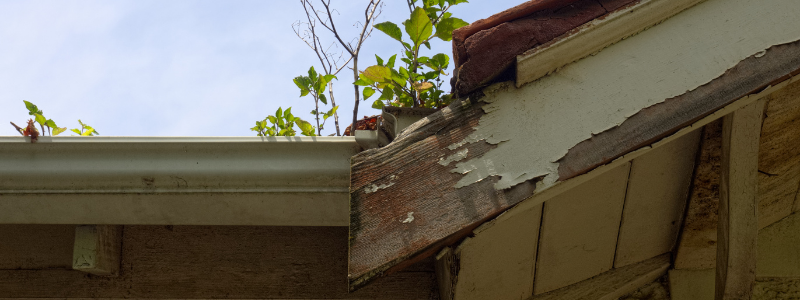
Colorado Climate and Your Roof
Intense Colorado weather can pose a challenge for roofs and their durability. A single day in Colorado can experience rain, snow, winds, hail, and sun — which can all have a damaging effect on your roof.
The National Roofing Contractors Association recommends getting your roof inspected after any significant weather event. In Colorado, it’s safest to perform roof inspections during fall and spring.
During Colorado winters, it’s common for ice dams to form on your roof. This prevents water on your roof from falling away, creating damp environments for fungi to grow and spread. A build-up of moisture on your roof can also cause water to leak into your home, further damaging its interior.
Additionally, a hail-damaged roof can result in a leak, creating optimal environments for mold, mildew, and fungus to grow and spread.
When Should I Check My Roof for Rot?
While regular roof maintenance is something we highly recommend, we understand that it isn’t a home maintenance check we do on a regular basis. No matter if it’s wet rot vs dry rot, it’s worth looking into.
Here is when we recommend checking for wood rot:
- When buying or selling a home.
- If there is ice, water, or tree damage to your roof.
- When replacing your roof.
- If your home has moisture issues.
- When installing new insulation or ventilation.
B&M Roofing and RoofSave
To prevent instances of wet and dry rot infestation, regular roof inspection and maintenance are highly recommended. At B&M Roofing, we offer RoofSave, a roof asset management program that allows you to always be informed about the current state of your roof.
If you suspect you have a wet or dry rot problem on your property, contact our specialists at B&M Roofing for advice and consultation, we’ll get a handle on it as soon as possible.
Roof Restoration
Amidst the scenic landscapes of Colorado, the roof of a home or business serves as a silent sentinel against the harsh weather. However, even the strongest roofs can face deterioration over time. This is where the concept of “Roof Restoration” comes in. Roof Restoration is not just a simple repair job; it is a comprehensive process that rejuvenates your existing roof, increasing its durability and lifespan. It is an important service that ensures the safety and longevity of the most important protective barrier of your property.
Understanding the importance of roof restoration is vital for every homeowner and business owner. A well-maintained roof not only provides shelter but also adds value to your property. In the ever-changing climate of Colorado, where harsh winters and sunny summers are the norms, ensuring your roof is in optimal condition is not just a matter of aesthetics but of safety and financial prudence.
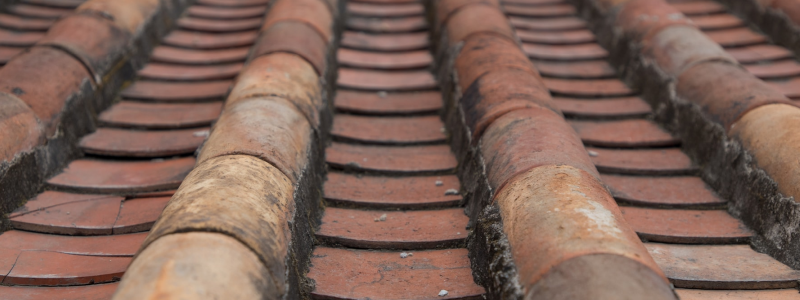
What Is the Difference Between Restoration and Replacement?
Roof Restoration is not just a buzzword in the roofing industry; it’s a strategic decision that offers a surplus of benefits to homeowners and business owners alike. Let’s delve into the advantages of opting for restoration over a complete roof replacement:
- Cost-Effectiveness: One of the most compelling reasons to choose Roof Restoration is its cost-saving potential. Restoration is typically more affordable than a full roof replacement, allowing property owners to achieve significant savings.
- Extended Roof Lifespan: A well-executed restoration can add years to your roof’s life, ensuring that you get the most out of your initial investment.
- Enhanced Energy Efficiency: A restored roof can improve the energy efficiency of your property. With the right materials and techniques, a restored roof can reflect more sunlight and absorb less heat, leading to cooler interiors and reduced air conditioning costs.
- Eco-Friendly Choice: Roof Restoration is an environmentally-friendly option. Instead of discarding old roofing materials, restoration reuses much of the existing material, reducing landfill waste.
- Minimal Disruption: Unlike a full replacement, which can be a lengthy and disruptive process, restoration is quicker and causes minimal disturbance to the occupants of the property.
- Preservation of Property Aesthetics: Restoration maintains the original look and feel of your property, ensuring that its aesthetic appeal remains intact.
Difference Between Restoration and Replacement: Clearing Common Misconceptions
When it comes to maintaining the integrity of your roof, understanding the distinction between “Roof Restoration” and roof replacement is crucial. These terms, while often used interchangeably, refer to two distinct processes, each with its own set of advantages and appropriate scenarios.
Roof Restoration:
- Definition: Roof Restoration involves rejuvenating the existing roof by addressing specific areas of damage, applying protective coatings, and enhancing its overall functionality without replacing the entire structure.
- Applicability: Ideal for roofs that are not extensively damaged but show signs of wear and tear. It’s a preventive measure that can extend the roof’s lifespan by several years.
- Benefits: More cost-effective than replacement, environmentally friendly due to reduced waste, and less disruptive to property occupants.
Roof Replacement:
- Definition: This process entails removing the entire existing roof and installing a new one from scratch. It’s a comprehensive solution that addresses severe or widespread damage.
- Applicability: Necessary when the roof has reached the end of its lifespan, has extensive damage, or when restoration is no longer a viable option.
- Benefits: Provides a fresh start with a new roof that can last for decades, ensures complete resolution of all existing issues, and can increase property value.
While both restoration and replacement have their merits, the decision between the two should be based on the roof’s condition, age, and the specific needs of the property.
What Are Some Tips for Roof Restoration? Best Practices
Roof Restoration is a meticulous process that requires careful planning and execution. For homeowners and business owners in Denver, Colorado, ensuring the effectiveness of the restoration process is paramount. Here are some best practices and things to consider for a successful Roof Restoration:
- Routine Inspections: Regularly inspect your roof for signs of damage or wear. Early detection can prevent minor issues from escalating into major problems.
- Choose Quality Materials: The longevity and effectiveness of your restoration largely depend on the materials used. Opt for high-quality, durable materials that can withstand the Colorado climate.
- Hire Experienced Professionals: The expertise of the contractor plays a significant role in the outcome of the restoration. Ensure you hire professionals with a proven track record in roof restoration.
- Timing Matters: The best time for roof restoration is during dry weather. Avoid rainy or snowy seasons as moisture can hinder the restoration process.
- Safety First: Ensure that all safety protocols are followed during the restoration. This includes using safety gear and ensuring that the work area is secure.
- Address Problem Areas: Pay special attention to areas that are prone to leaks or damage. These might include areas around chimneys, vents, and skylights.
- Stay Informed: Educate yourself about the restoration process. Being informed allows you to make better decisions and ensures that you get the best value for your money.

Roof Sealing: What Is It, And Is It a Good Idea For Your Roof?
One term that often emerges is “roof sealing.” But what exactly is roof sealing, and why is it considered beneficial for roofs, especially in places like Denver, Colorado?
Understanding Roof Sealing:
Roof sealing refers to the application of a protective layer or coating on the roof’s surface. This sealant acts as a barrier against external elements, such as rain, snow, and UV rays, preventing them from directly impacting the roof material. The primary purpose of roof sealing is to enhance the roof’s waterproofing capabilities, ensuring that water doesn’t seep into the underlying layers.
Benefits of Roof Sealing:
- Waterproofing: As mentioned, the primary benefit of roof sealing is its ability to repel water, reducing the chances of leaks and water damage.
- UV Protection: The sealant can reflect harmful UV rays, preventing them from deteriorating the roof material.
- Temperature Regulation: A sealed roof can help in regulating the temperature inside the building, leading to energy savings.
- Extended Roof Life: By protecting the roof from various external factors, sealing can extend the roof’s lifespan.
- Cost Savings: In the long run, a sealed roof requires less maintenance and repair, leading to cost savings for homeowners and business owners.
While roof sealing offers numerous benefits, it’s essential to ensure that the process is done correctly. Using high-quality sealants and hiring experienced professionals can make a significant difference in the outcome.
Roofing Supplies and Coating
The choice of roofing materials plays a pivotal role in the overall functionality and longevity of a roof. With an overabundance of options available in the market, understanding the significance of each material becomes crucial, especially when considering Roof Restoration.
Common Roofing Materials:
- Asphalt Shingles: One of the most popular choices, asphalt shingles are known for their durability and cost-effectiveness. They come in a variety of colors and styles, making them suitable for various architectural designs.
- Metal Roofing: Metal roofs are revered for their longevity and resistance to extreme weather conditions. They are also energy-efficient, reflecting sunlight and reducing cooling costs.
- Wood Shakes: Offering a natural and rustic appearance, wood shakes are made from split logs. They provide excellent insulation but require regular maintenance.
- Slate Tiles: Slate is a natural stone material known for its longevity and aesthetic appeal. While heavy, slate roofs can last for centuries with proper care.
- Clay or Concrete Tiles: These tiles are fire-resistant and can withstand harsh weather conditions. They are often used in regions with a hot climate due to their insulating properties.
Importance of Roofing Materials:
- Protection: The primary function of any roofing material is to offer protection against external elements like rain, snow, and UV rays.
- Energy Efficiency: Some materials, like metal roofing, reflect sunlight, leading to reduced energy costs.
- Aesthetic Appeal: The choice of material can enhance the visual appeal of a property, complementing its architectural style.
- Lifespan: High-quality materials can extend the life of the roof, reducing the need for frequent repairs or replacements.

Informed Decisions for a Sturdy Roof: Wrapping Up the Essentials of Roof Restoration
The integrity of your roof is paramount for the safety and longevity of your property. Throughout our discussion on Roof Restoration, we’ve underscored its significance, from understanding its core principles to the benefits it offers over a complete overhaul. We’ve illuminated the protective shield that roof sealing provides and the pivotal role of various roofing materials in determining a roof’s durability.
Key Takeaways:
- Roof Restoration: A proactive approach that rejuvenates your existing roof, extending its lifespan, and warding off potential damages.
- Cost-Effectiveness: Restoration is often more affordable than a full replacement, making it a financially sound choice.
- Environmental Consideration: Opting for restoration over replacement is environmentally friendly, reducing waste and promoting sustainability.
- Protection and Aesthetics: Roof sealing and the choice of roofing materials not only ensure protection but also enhance the aesthetic appeal of your property.
For those in Denver, Colorado, regular roof maintenance and timely restoration are not mere suggestions but necessities. By being proactive, homeowners and business owners can ensure the safety of their property, making a wise financial decision in the process.
If roof restoration is on your horizon, don’t hesitate to reach out to B&M Roofing. Our seasoned team is poised to guide you, ensuring your property in Colorado stands tall against the test of time.

